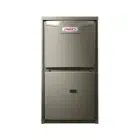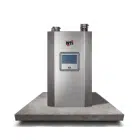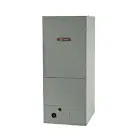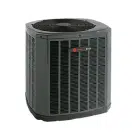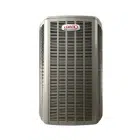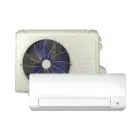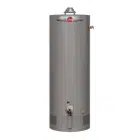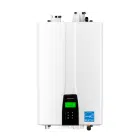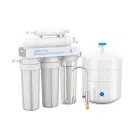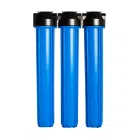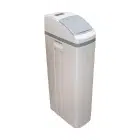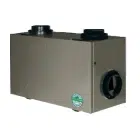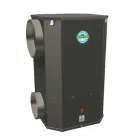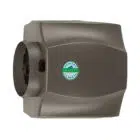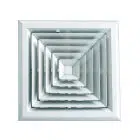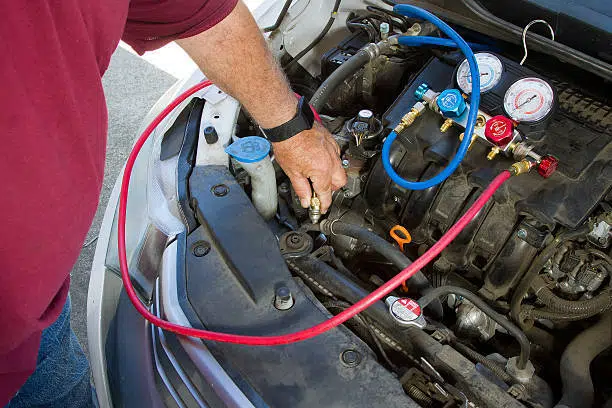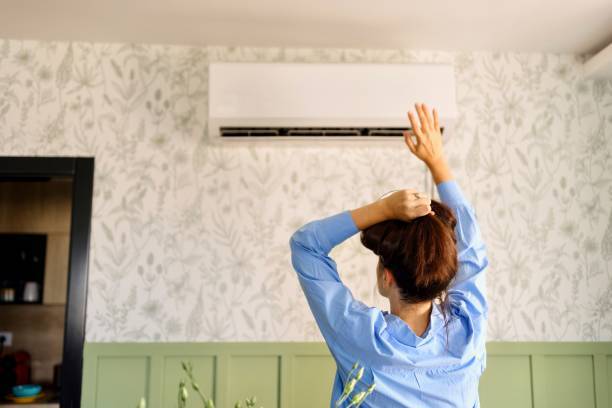
Table of Contents
A properly functioning air conditioner is essential for keeping your home cool and comfortable, especially during the hot summer months in Canada. But what if your AC suddenly starts blowing warm air instead of the cool, refreshing breeze you expect? This issue can be frustrating, but more importantly, it can signal a deeper problem within your HVAC system. Ignoring it could lead to higher energy bills, system inefficiencies, and costly repairs.
There are several reasons why your air conditioner might be failing to cool your home, ranging from simple thermostat misconfigurations to more complex issues like refrigerant leaks or compressor failures. In this guide, we will break down the most common causes, explain how to diagnose them, and provide actionable solutions to get your AC back in top shape. We’ll also discuss when it’s time to call a professional HVAC technician for assistance.
AC Blowing Warm Air? Check the Thermostat Issues
One of the easiest and most overlooked reasons your AC may be blowing warm air is an incorrect thermostat setting. Many homeowners assume there’s a major issue with their unit when, in reality, the problem is a simple adjustment.
Common Thermostat Problems and Fixes:
- Set to “Heat” Instead of “Cool”: It may sound obvious, but sometimes the thermostat setting can get accidentally switched. Ensure your thermostat is set to “Cool” and the fan is set to “Auto.”
- Wrong Temperature Setting: If your thermostat is set too high, the AC may not engage cooling mode. Try lowering the temperature a few degrees to see if it kicks on.
- Battery Issues: If your thermostat runs on batteries, low power can cause malfunctions. Replace the batteries and see if the problem persists.
- Sensor Malfunction: Some thermostats have built-in sensors to detect room temperature. If the sensor is malfunctioning or misaligned, it may not properly signal the cooling system to turn on.
- Smart Thermostat Connectivity Issues: If you have a Wi-Fi-enabled thermostat, check your settings in the app to ensure it is properly programmed and connected to your system.
How to Fix It:
Start by ensuring the thermostat is set correctly. If the settings appear fine but your AC is still blowing warm air, reset the thermostat by turning it off for a few minutes and then back on. If you’re using a smart thermostat, try resetting the Wi-Fi connection or reconfiguring the schedule settings. If none of these steps resolve the issue, the problem might be with your HVAC system rather than the thermostat.
Dirty or Clogged Air Filters
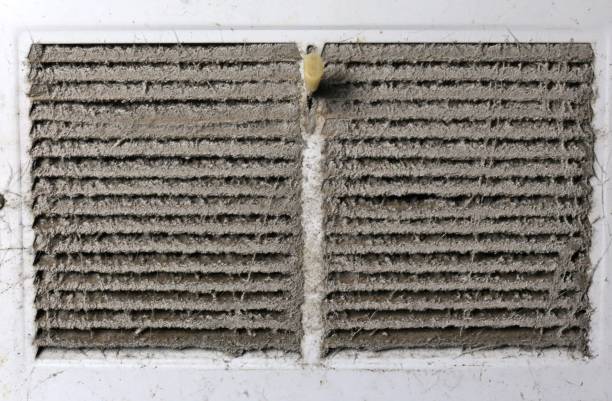
Your AC filter plays a critical role in maintaining airflow and ensuring your system runs efficiently. A dirty or clogged filter can obstruct airflow, causing the system to overheat and struggle to produce cool air.
Signs of a Clogged Filter:
- Weak airflow from vents.
- Dust buildup around vents and on furniture.
- Increased energy bills due to system overworking.
- Frozen evaporator coils (visible if you open the indoor unit panel).
How to Fix It:
Check your air filter and replace it if it appears dirty or clogged. Most manufacturers recommend changing the filter every 1-3 months, depending on usage and household conditions (e.g., if you have pets or allergies, more frequent replacements may be necessary). Regularly changing your filter can prevent costly repairs and improve indoor air quality.
Low Refrigerant Levels or Leaks
Refrigerant is the substance that cools the air in your AC system. If your unit is low on refrigerant due to a leak, it won’t be able to remove heat effectively, causing warm air to blow from your vents.
Signs of a Refrigerant Leak:
- Warm air from vents despite the AC running.
- Hissing or bubbling noises near the refrigerant lines.
- Ice buildup on the refrigerant lines or evaporator coils.
- Higher than usual electricity bills due to inefficient cooling.
How to Fix It:
Refrigerant leaks require professional attention. Unlike adding coolant to a car, you can’t simply “top off” refrigerant; the leak must be located and repaired before recharging the system. A licensed air conditioner repair service can diagnose and fix the issue, ensuring your AC runs efficiently and safely.
Dirty or Blocked Condenser Coils
Your outdoor condenser unit expels heat from your home. If the coils are covered in dirt, dust, or debris, the system struggles to release heat, leading to warm air circulation inside.
Signs of Dirty Condenser Coils:
- AC runs but doesn’t cool.
- Unit feels excessively hot to the touch.
- Increased cooling cycles without effective temperature control.
How to Fix It:
Turn off the power to your AC unit and gently clean the condenser coils using a garden hose. Avoid using high-pressure water as it can damage the fins. If dirt is caked on, a professional deep cleaning may be required.
Ductwork Issues and Air Leaks
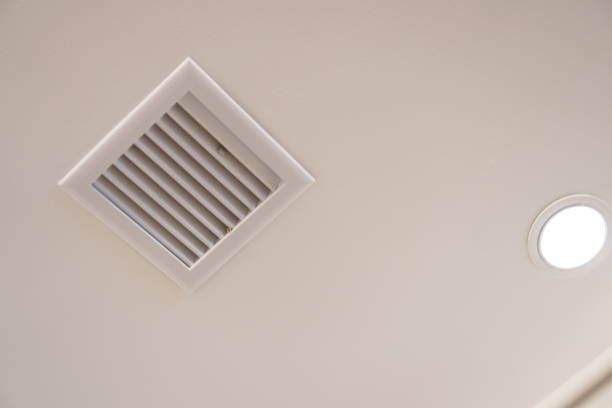
Your AC system relies on ductwork to distribute cool air throughout your home. If there are leaks, blockages, or poorly insulated ducts, conditioned air may escape before it reaches your rooms.
Signs of Ductwork Problems:
- Uneven cooling in different rooms.
- Higher-than-normal energy bills.
- Visible gaps or disconnected duct sections in your attic or basement.
How to Fix It:
Inspect visible ductwork for leaks or loose connections and seal them using HVAC foil tape or mastic sealant. If you suspect more extensive duct problems, an HVAC technician can conduct a professional duct cleaning and recommend sealing or insulation improvements to optimize airflow.
Malfunctioning Compressor
The compressor is the heart of your AC system. If it fails, your AC won’t be able to circulate refrigerant properly, resulting in warm air.
Signs of a Compressor Problem:
- AC hums but doesn’t cool.
- Short cycling (turning on and off frequently).
- Tripped circuit breaker when the AC is running.
How to Fix It:
A faulty compressor typically requires professional repair or replacement. If your AC is older, it may be more cost-effective to replace the unit rather than repair the compressor.
Check out 5 signs that you need to replace your air conditioner unit in our previous guide.
When Do I Need a Professional AC Repair Service?
While some AC problems can be fixed with DIY troubleshooting, others require expert attention. Contact a professional if:
- Your AC is blowing warm air despite checking the thermostat and air filter.
- You suspect a refrigerant leak, which can be hazardous if left unaddressed.
- The compressor isn’t functioning properly, leading to inefficient cooling or frequent shutdowns.
- Electrical issues are causing the unit to trip breakers or fail to start.
- You notice unusual noises, such as grinding or loud humming, coming from your AC unit.
- Your AC has frozen coils or excessive ice buildup on the refrigerant lines.
Delaying professional service when your AC is blowing warm air can lead to more severe damage and costly repairs. HVAC technicians have the expertise and equipment to diagnose and fix issues efficiently, ensuring your home stays cool and comfortable.
Conclusion
If your AC is blowing warm air, don’t wait until the problem worsens. Start with simple checks like the thermostat and air filter, and if the issue persists, contact a professional for a thorough diagnosis. Regular maintenance can prevent these problems from occurring in the first place, saving you money and ensuring comfort during the hot summer months.
Need expert AC repair in Canada? Contact our HVAC Service Solutions Company today for fast and reliable service!
FAQs
1. Why is my AC blowing warm air instead of cold?
There are several potential reasons your AC might be blowing warm air. The most common causes include:
- Incorrect thermostat settings (set to “heat” instead of “cool”).
- A clogged or dirty air filter restricting airflow.
- Low refrigerant levels due to a leak.
- Dirty or blocked condenser coils preventing heat dissipation.
- Electrical or mechanical failures, such as a faulty compressor or capacitor.
- Leaky or poorly insulated ductwork causing cooled air to escape.
Start by checking the thermostat and air filter. If those aren’t the problem, it’s best to call an HVAC technician for a thorough diagnosis.
2. Can a dirty air filter cause my AC to blow warm air?
Yes, a dirty air filter can significantly impact your AC’s performance. A clogged filter restricts airflow, causing the system to work harder and potentially overheat. This can lead to:
- Reduced cooling efficiency.
- Frozen evaporator coils, which can lead to warm air circulation.
- Increased energy consumption and higher utility bills.
To avoid this, replace your air filter every 1-3 months, depending on usage and indoor air quality.
3. How do I know if my AC is low on refrigerant?
Refrigerant is essential for cooling, and if levels drop due to a leak, your AC won’t be able to cool properly. Signs of low refrigerant include:
- Warm air blowing from vents.
- Ice buildup on refrigerant lines or evaporator coils.
- Hissing or bubbling sounds near the AC unit (indicating a leak).
- Increased energy bills due to inefficiency.
Since handling refrigerant requires specialized knowledge and tools, you’ll need an HVAC technician to locate the leak, repair it, and recharge the system.
4. Can thermostat issues cause my AC to blow warm air?
Absolutely. If your thermostat isn’t set correctly or is malfunctioning, your AC may not cool properly. Common thermostat-related issues include:
- Incorrect mode selection (set to “heat” instead of “cool”).
- Faulty temperature readings causing the system to shut off prematurely.
- Weak or dead batteries in battery-powered models.
- Wi-Fi connectivity issues with smart thermostats.
Check the settings, replace the batteries if needed, and restart the thermostat. If problems persist, consider upgrading to a newer, more reliable model.
5. How do I fix an AC that’s blowing warm air?
If your AC is blowing warm air, try these troubleshooting steps:
- Check the thermostat – Ensure it’s set to “cool” and at a lower temperature than the room temperature.
- Inspect the air filter – Replace it if it’s dirty or clogged.
- Examine the circuit breaker – A tripped breaker could cut power to the outdoor unit.
- Look at the condenser unit – Make sure it’s clean and free of debris.
- Check for ice buildup – If the evaporator coils are frozen, turn off the AC and let them thaw before restarting.
If none of these solutions work, contact an HVAC professional to inspect and repair the system.
6. Can ductwork issues cause my AC to blow warm air?
Yes, leaky or poorly insulated ductwork can cause cool air to escape before it reaches your living spaces. This results in weak airflow and uneven cooling. Signs of duct problems include:
- Inconsistent temperatures in different rooms.
- Higher-than-normal energy bills.
- Visible gaps or damage in exposed ductwork.
Sealing leaks with HVAC foil tape or mastic sealant can help, but if you suspect extensive duct damage, it’s best to schedule an inspection with a professional.
7. When should I call an HVAC technician for my AC blowing warm air?
While some issues can be resolved with DIY troubleshooting, professional help is necessary when:
- Your AC is still blowing warm air after basic fixes.
- You suspect a refrigerant leak.
- The compressor is malfunctioning or making unusual noises.
- Electrical issues are causing the unit to short-cycle or fail to start.
- Ice buildup is present on coils or refrigerant lines.
Calling a technician early can prevent further damage and costly repairs.
8. Can bad weather affect my AC’s ability to cool?
Yes, extreme weather conditions can impact your AC’s performance. Here’s how:
- High Outdoor Temperatures – When outdoor temperatures soar, your AC has to work harder to remove heat from your home. If it’s struggling to keep up, it might feel like it’s blowing warm air.
- Heavy Rain or Storms – While rain itself won’t damage an AC unit, severe storms can lead to debris buildup around the outdoor condenser unit. This can restrict airflow and reduce cooling efficiency.
- High Humidity – If your AC isn’t properly sized or maintained, it might struggle to remove excess moisture from the air, making it feel warmer inside.
- Winter Weather – If your AC is running in colder temperatures (below 60°F), it may not function properly. Most systems aren’t designed to operate efficiently in cool weather.
To prevent weather-related issues, keep the outdoor unit clear of debris, schedule regular maintenance, and ensure your AC is properly sized for your home’s cooling needs.
9. How often should I schedule maintenance to prevent AC issues?
Routine maintenance is key to preventing problems like warm air blowing from your AC. HVAC professionals recommend:
- Annual Tune-Ups – Schedule professional maintenance at least once a year, preferably in the spring before peak cooling season.
- Regular Filter Changes – Replace or clean air filters every 1–3 months, depending on usage and indoor air quality.
- Condenser and Evaporator Coil Cleaning – Dirt buildup on coils can reduce cooling efficiency. A technician can clean these during a tune-up.
- Checking Refrigerant Levels – Low refrigerant is a common cause of warm air. A professional can check for leaks and recharge the system if necessary.
- Inspecting and Sealing Ductwork – Leaky ducts can cause cool air loss, leading to poor performance and higher energy bills.
Proactive maintenance not only helps prevent breakdowns but also improves energy efficiency and extends the lifespan of your AC unit.
10. Is it better to repair or replace an AC unit that keeps blowing warm air?
Deciding whether to repair or replace your AC depends on several factors:
- Age of the Unit – If your AC is more than 10-15 years old, frequent repairs may indicate it’s time for a replacement.
- Repair Costs – A general rule is if the repair costs exceed 50% of the price of a new unit, replacement is the better option.
- Energy Efficiency – Older units are less efficient and may cause higher energy bills. Newer models with higher SEER ratings (Seasonal Energy Efficiency Ratio) can save you money in the long run.
- Frequency of Breakdowns – If you’re calling for repairs multiple times a season, a new system might be a more cost-effective solution.
- Refrigerant Type – If your AC uses R-22 refrigerant (which is being phased out), repairs will become increasingly expensive. A newer unit with R-410A or R-32 refrigerant is a better long-term investment.
Share

